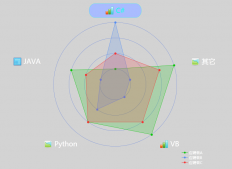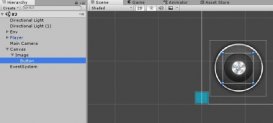前言
本节重点不讲反射机制,而是讲lambda表达式树来替代反射中常用的获取属性和方法,来达到相同的效果但却比反射高效。
每个人都知道,用反射调用一个方法或者对属性执行setvalue和getvalue操作的时候都会比直接调用慢很多,这其中设计到clr中内部的处理,不做深究。然而,我们在某些情况下又无法不使用反射,比如:在一个orm框架中,你要将一个datarow转化为一个对象,但你又不清楚该对象有什么属性,这时候你就需要写一个通用的泛型方法来处理,以下代码写得有点恶心,但不妨碍理解意思:
|
1
2
3
4
5
6
7
8
9
10
11
12
13
14
15
16
17
18
19
20
21
22
23
24
25
26
27
28
29
30
31
32
33
34
35
36
37
38
39
40
41
42
43
44
45
46
47
48
49
50
51
52
53
54
55
56
57
58
59
60
61
62
63
64
|
//将datareader转化为一个对象 private static t getobj<t>(sqlitedatareader reader) where t : class { t obj = new t(); propertyinfo[] pros = obj.gettype().getproperties(); foreach (propertyinfo item in pros) { try { int32 index = reader.getordinal(item.name); string result = reader.getstring(index); if (typeof(string) == item.propertytype) { item.setvalue(obj, result); continue; } if (typeof(datetime) == item.propertytype) { item.setvalue(obj, convert.todatetime(result)); continue; } if (typeof(boolean) == item.propertytype) { item.setvalue(obj, convert.toboolean(result)); continue; } if (typeof(int32) == item.propertytype) { item.setvalue(obj, convert.toint32(result)); continue; } if (typeof(single) == item.propertytype) { item.setvalue(obj, convert.tosingle(result)); continue; } if (typeof(single) == item.propertytype) { item.setvalue(obj, convert.tosingle(result)); continue; } if (typeof(double) == item.propertytype) { item.setvalue(obj, convert.todouble(result)); continue; } if (typeof(decimal) == item.propertytype) { item.setvalue(obj, convert.todecimal(result)); continue; } if (typeof(byte) == item.propertytype) { item.setvalue(obj, convert.tobyte(result)); continue; } } catch (argumentoutofrangeexception ex) { continue; } } return obj; } |
对于这种情况,其执行效率是特别低下的,具体多慢在下面例子会在.net core平台上和.net framework4.0运行测试案例.对于以上我举例的情况,效率上我们还可以得到提升。但对于想在运行时修改一下属性的名称或其他操作,反射还是一项特别的神器,因此在某些情况下反射还是无法避免的。
但是对于只是简单的setvalue或者getvalue,包括用反射构造函数,我们可以想一个中继的方法,那就是使用表达式树。对于不理解表达式树的,可以到微软文档查看,。表达式树很容易通过对象模型表示表达式,因此强烈建议学习。查看以下代码:
|
1
2
3
4
5
6
7
8
9
10
11
12
13
14
15
16
17
18
19
20
21
22
23
24
25
26
27
28
29
30
|
static void main() { dog dog = new dog(); propertyinfo propertyinfo = dog.gettype().getproperty(nameof(dog.name)); //获取对象dog的属性 methodinfo settermethodinfo = propertyinfo.getsetmethod(); //获取属性name的set方法 parameterexpression param = expression.parameter(typeof(dog), "param"); expression getpropertyvalueexp = expression.lambda(expression.property(param, nameof(dog.name)), param); expression<func<dog, string>> getpropertyvaluelambda = (expression<func<dog, string>>)getpropertyvalueexp; parameterexpression paramo = expression.parameter(typeof(dog), "param"); parameterexpression parami = expression.parameter(typeof(string), "newvalue"); methodcallexpression methodcallsetterofproperty = expression.call(paramo, settermethodinfo, parami); expression setpropertyvalueexp = expression.lambda(methodcallsetterofproperty, paramo, parami); expression<action<dog, string>> setpropertyvaluelambda = (expression<action<dog, string>>)setpropertyvalueexp; //创建了属性name的get方法表达式和set方法表达式,当然只是最简单的 func<dog, string> getter = getpropertyvaluelambda.compile(); action<dog, string> setter = setpropertyvaluelambda.compile(); setter?.invoke(dog, "wlj"); //我们现在对dog这个对象的name属性赋值 string dogname = getter?.invoke(dog); //获取属性name的值 console.writeline(dogname); console.readkey(); } public class dog { public string name { get; set; } } |
以下代码可能很难看得懂,但只要知道我们创建了属性的get、set这两个方法就行,其结果最后也能输出狗的名字 wlj,拥有expressiontree的好处是他有一个名为compile()的方法,它创建一个代表表达式的代码块。现在是最有趣的部分,假设你在编译时不知道类型(在这篇文章中包含的代码我在不同的程序集上创建了一个类型)你仍然可以应用这种技术,我将对于常用的属性的set,get操作进行分装。
|
1
2
3
4
5
6
7
8
9
10
11
12
13
14
15
16
17
18
19
20
21
22
23
24
25
26
27
28
29
30
31
32
33
34
35
36
37
38
39
40
41
42
43
44
45
46
47
48
49
50
51
52
53
54
55
56
57
58
59
60
61
62
63
64
65
66
67
68
69
70
71
72
73
74
75
76
77
78
79
80
81
82
83
84
85
86
87
88
89
90
91
92
93
94
95
96
97
98
99
100
101
102
103
104
105
106
107
108
109
110
111
112
113
114
115
116
117
118
119
120
121
122
123
124
125
126
127
128
129
130
131
132
133
134
135
136
137
138
139
140
141
142
143
144
145
|
/// <summary> /// 属性类,仿造反射中的propertyinfo /// </summary> public class property { private readonly propertygetter getter; private readonly propertysetter setter; public string name { get; private set; } public propertyinfo info { get; private set; } public property(propertyinfo propertyinfo) { if (propertyinfo == null) throw new nullreferenceexception("属性不能为空"); this.name = propertyinfo.name; this.info = propertyinfo; if (this.info.canread) { this.getter = new propertygetter(propertyinfo); } if (this.info.canwrite) { this.setter = new propertysetter(propertyinfo); } } /// <summary> /// 获取对象的值 /// </summary> /// <param name="instance"></param> /// <returns></returns> public object getvalue(object instance) { return getter?.invoke(instance); } /// <summary> /// 赋值操作 /// </summary> /// <param name="instance"></param> /// <param name="value"></param> public void setvalue(object instance, object value) { this.setter?.invoke(instance, value); } private static readonly concurrentdictionary<type, core.reflection.property[]> securitycache = new concurrentdictionary<type, property[]>(); public static core.reflection.property[] getproperties(type type) { return securitycache.getoradd(type, t => t.getproperties().select(p => new property(p)).toarray()); } } /// <summary> /// 属性get操作类 /// </summary> public class propertygetter { private readonly func<object, object> funcget; public propertygetter(propertyinfo propertyinfo) : this(propertyinfo?.declaringtype, propertyinfo.name) { } public propertygetter(type declaretype, string propertyname) { if (declaretype == null) { throw new argumentnullexception(nameof(declaretype)); } if (propertyname == null) { throw new argumentnullexception(nameof(propertyname)); } this.funcget = creategetvaluedeleagte(declaretype, propertyname); } //代码核心部分 private static func<object, object> creategetvaluedeleagte(type declaretype, string propertyname) { // (object instance) => (object)((declaringtype)instance).propertyname var param_instance = expression.parameter(typeof(object)); var body_objtotype = expression.convert(param_instance, declaretype); var body_gettypeproperty = expression.property(body_objtotype, propertyname); var body_return = expression.convert(body_gettypeproperty, typeof(object)); return expression.lambda<func<object, object>>(body_return, param_instance).compile(); } public object invoke(object instance) { return this.funcget?.invoke(instance); } } public class propertysetter { private readonly action<object, object> setfunc; public propertysetter(propertyinfo property) { if (property == null) { throw new argumentnullexception(nameof(property)); } this.setfunc = createsetvaluedelagate(property); } private static action<object, object> createsetvaluedelagate(propertyinfo property) { // (object instance, object value) => // ((instancetype)instance).set_xxx((propertytype)value) //声明方法需要的参数 var param_instance = expression.parameter(typeof(object)); var param_value = expression.parameter(typeof(object)); var body_instance = expression.convert(param_instance, property.declaringtype); var body_value = expression.convert(param_value, property.propertytype); var body_call = expression.call(body_instance, property.getsetmethod(), body_value); return expression.lambda<action<object, object>>(body_call, param_instance, param_value).compile(); } public void invoke(object instance, object value) { this.setfunc?.invoke(instance, value); } } |
在将代码应用到实例:
|
1
2
3
4
5
6
7
8
9
10
11
12
13
|
dog dog = new dog();propertyinfo propertyinfo = dog.gettype().getproperty(nameof(dog.name));//反射操作propertyinfo.setvalue(dog, "wlj");string result = propertyinfo.getvalue(dog) as string;console.writeline(result);//表达式树的操作property property = new property(propertyinfo);property.setvalue(dog, "wlj2");string result2 = propertyinfo.getvalue(dog) as string;console.writeline(result2); |
发现其实现的目的与反射一致,但效率却有明显的提高。
以下测试以下他们两之间的效率。测试代码如下:
|
1
2
3
4
5
6
7
8
9
10
11
12
13
14
15
16
17
18
19
|
student student = new student();propertyinfo propertyinfo = student.gettype().getproperty(nameof(student.name));property expproperty = new property(propertyinfo);int32 loopcount = 1000000;codetimer.initialize(); //测试环境初始化//下面该方法个执行1000000次codetimer.time("基础反射", loopcount, () => { propertyinfo.setvalue(student, "fode",null);});codetimer.time("lambda表达式树", loopcount, () => { expproperty.setvalue(student, "fode");});codetimer.time("直接赋值", loopcount, () => { student.name = "fode";});console.readkey(); |
其.net4.0环境下运行结果如下:

.net core环境下运行结果:

从以上结果可以知道,迭代同样的次数反射需要183ms,而用表达式只要34ms,直接赋值需要7ms,在效率上,使用表达式这种方法有显著的提高,您可以看到使用此技术可以完全避免使用反射时的性能损失。反射之所以效率有点低主要取决于其加载的时候时在运行期下,而表达式则在编译期,下篇有空将会介绍用emit技术优化反射,会比表达式略快一点。
注:对于常用对象的属性,最好将其缓存起来,这样效率会更高。。
总结
以上就是这篇文章的全部内容了,希望本文的内容对大家的学习或者工作具有一定的参考学习价值,如果有疑问大家可以留言交流,谢谢大家对服务器之家的支持。
原文链接:https://www.cnblogs.com/fode/p/10079630.html


















